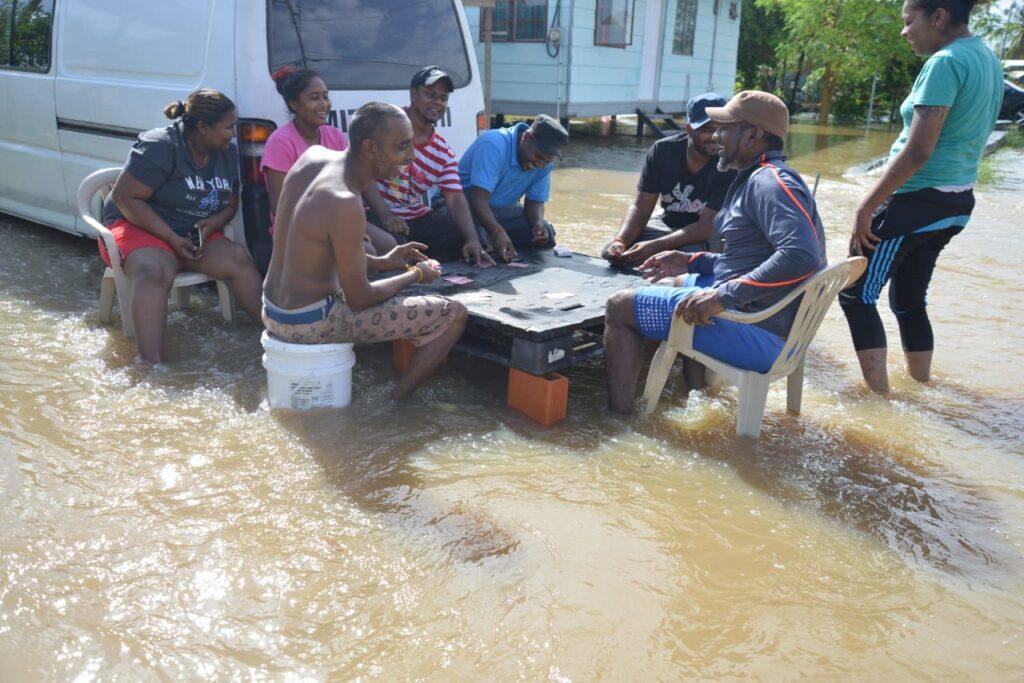Addressing Flooding in Developing Countries: Lessons from Trinidad and Tobago

Flooding is a significant and recurrent issue in many developing countries, including Trinidad and Tobago. The twin-island nation, located in the Caribbean, faces frequent and sometimes devastating floods due to its tropical climate, seasonal rains, and hurricanes. These floods impact infrastructure, agriculture, and livelihoods, highlighting the need for a coordinated approach to flood management.
Understanding Flooding in Trinidad and Tobago
Trinidad and Tobago experiences flooding due to a combination of heavy rainfall, inadequate drainage systems, and the impact of climate change. The country is particularly vulnerable to intense rain events associated with tropical storms and hurricanes, which can overwhelm existing infrastructure and lead to severe flooding in urban and rural areas alike.
Strategies for Flood Management
To effectively address flooding, a comprehensive strategy involving citizens, governments, and institutions is essential. The following sections outline key actions that each stakeholder can take:
1. Citizens: Roles and Responsibilities
- Community Awareness and Education
- Flood Preparedness: Citizens should be educated about flood risks and preparedness measures. This includes understanding flood warning systems, creating emergency plans, and knowing evacuation routes.
- Public Workshops: Regular workshops and information sessions can help raise awareness about the impacts of flooding and the importance of community preparedness.
- Home and Property Resilience
- Flood-Resistant Building Practices: Individuals should adopt flood-resistant construction techniques, such as elevating buildings and using materials that can withstand water exposure.
- Maintenance of Drains and Gutters: Regular cleaning and maintenance of home drainage systems can prevent blockages that contribute to flooding.
- Community Engagement
- Local Flood Watch Programs: Establish community-based flood watch programs where volunteers monitor and report potential flooding issues to local authorities.
- Neighborhood Associations: Active neighborhood associations can play a role in organizing local flood prevention initiatives and supporting affected residents.
2. Governments: Policy and Implementation
- Infrastructure Improvement
- Upgrade Drainage Systems: Invest in modernizing and expanding drainage infrastructure to handle increased water flow. This includes constructing retention basins, improving culverts, and maintaining existing systems.
- Flood Barriers and Levees: Implement flood barriers and levees in vulnerable areas to reduce the impact of high water levels.
- Urban Planning and Zoning
- Flood-Resilient Urban Design: Incorporate flood-resilient design principles in urban planning, such as creating green spaces that absorb excess rainwater and designing flood-resistant public buildings.
- Land Use Regulations: Enforce land use regulations that prevent construction in high-risk flood zones and promote the preservation of natural wetlands and floodplains.
- Emergency Management and Response
- Early Warning Systems: Develop and maintain effective early warning systems to alert residents about impending floods and provide timely information on evacuation procedures.
- Disaster Response Plans: Establish comprehensive disaster response plans that include coordination between emergency services, local governments, and humanitarian organizations.
- Climate Change Adaptation
- Mitigation and Adaptation Policies: Implement policies to address climate change, which exacerbates flooding. This includes reducing greenhouse gas emissions and developing adaptation strategies to cope with changing weather patterns.
3. Institutions: Coordination and Support
- Research and Data Collection
- Flood Risk Assessment: Conduct regular flood risk assessments to identify vulnerable areas and inform planning and response strategies.
- Data Sharing: Institutions should facilitate the sharing of data related to flooding, including meteorological data, historical flood records, and risk maps.
- Financial Support and Insurance
- Funding for Flood Mitigation: Provide financial support for flood mitigation projects, including grants and loans for infrastructure improvements and community resilience initiatives.
- Insurance Programs: Develop and promote insurance programs that cover flood damage to homes, businesses, and agricultural assets.
- Capacity Building and Training
- Training Programs: Offer training programs for local officials, emergency responders, and community leaders on flood management and disaster response.
- Knowledge Exchange: Facilitate knowledge exchange between institutions, both nationally and internationally, to share best practices and innovative solutions for flood management.
- Collaboration and Partnerships
- Public-Private Partnerships: Encourage collaboration between public and private sectors to leverage resources and expertise in flood management projects.
- International Cooperation: Engage in international cooperation and seek assistance from global organizations and donor agencies to support flood management efforts.
Case Study: Trinidad and Tobago
In Trinidad and Tobago, flooding is a recurrent problem, especially in low-lying areas and urban centers. The government has taken various steps to address this issue, including infrastructure upgrades and improved drainage systems. However, challenges remain, particularly with rapid urbanization and climate change.
Recent Initiatives:
- The Drainage Improvement Program: This program focuses on upgrading and expanding the country’s drainage infrastructure.
- Community-Based Flood Watch: Local communities have been encouraged to participate in flood watch programs and engage in preparedness activities.
Challenges:
- Funding Constraints: Limited financial resources can hinder large-scale infrastructure projects.
- Climate Change Impact: Increasingly erratic weather patterns make it difficult to predict and manage flooding effectively.
Conclusion
Addressing flooding in developing countries like Trinidad and Tobago requires a comprehensive and collaborative approach. By involving citizens, governments, and institutions in flood management efforts, the resilience of communities can be significantly improved. Education, infrastructure investment, effective policy implementation, and strong institutional support are crucial to mitigating the impacts of flooding and ensuring sustainable development in flood-prone areas.
Through continued efforts and cooperation, Trinidad and Tobago can build a more resilient society capable of facing the challenges posed by flooding and climate change.






Responses